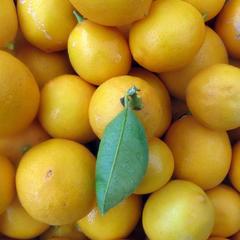I'm not really a fan of crunchy vegetables. I personally believe that they're suitable for rabbit food. Maybe you like them that way. If so, more for you.
I particularly like them cooked in the Italian manner -- simmered or braised over low heat and slowly cooked in their own juices so that when they emerge from the pot, they're nearly falling apart and their texture is like silk.
Life is too short to eat rabbit food.
Clockwise from lower left: Approx. 2 1/2 oz. guanciale, diced; 3 celery stalks with leaves, diced; 1 yellow onion, diced; 3 carrots, diced.
You can omit the guanciale, or if substitute either pancetta or bacon, or prosciutto or ham. Guanciale is cured spiced pork jowl and can be obtained at any Italian specialty food store or online from http://eataly.com/
4 Early Girl tomatoes, diced.
If you don't have Early Girl tomatoes, regular tomatoes are ok. Just make sure they're ripe. If you don't have any good tomatoes, canned tomatoes are fine. If I'm getting canned tomatoes, I usually try to buy canned San Marzano tomatoes (there's a preferred brand I like but I can't quite recall what it is right now) or Pomi brand if possible. If they're canned whole plum tomatoes, crush them by hand and place in a bowl. Reserve half of the juice and use the other half for another dish.
Warm olive oil in a heavy-bottomed pot over medium heat, add guanciale. Cook until fat has been rendered and the guanciale starts to crisp. Add onion, cook for 2-3 minutes, stirring occasionally.
Add the carrot and celery, plus salt and black pepper. Sauté until the vegetables are softened and fragrant.
Next add 2-3 medium zucchini, sliced. Sauté until zucchini has softened and has started to caramelize.
Next, add 2-3 sweet bell peppers that have been sliced. Season with salt and black pepper. Cook until the peppers have softened slightly.
Next, add the tomatoes (and if you're using canned tomatoes, add the reserved juices) and 1/2 lb. yellow wax beans that have been trimmed. If you don't have yellow beans, string beans are fine. Or any vegetables you have on hand.
Season with salt and pepper. Mix well. Cover the pot and reduce heat to low. Simmer for 1 hour or until the vegetables have softened and their texture is like silk. The beans in particular should be nearly falling apart.
Towards the last 20 minutes of cooking, uncover pot and raise heat slightly to medium-low. Reduce liquid until only a few tablespoons are left in the pot. (Or if you like a soupier stufato, leave the pot covered.) You may have to add a tablespoon or two of water to prevent the vegetables from scorching.
The idea is to cook the vegetables in their own juices without the addition of any liquid.
About 10 minutes prior to serving, I added a handful of shredded basil and 1 cup cooked fava beans.
Taste once more for salt and black pepper, then drizzle each serving with extra-virgin olive oil and top with grated Parmigiano-Reggiano cheese if desired.
Stufato di verdure ("vegetable stew").





